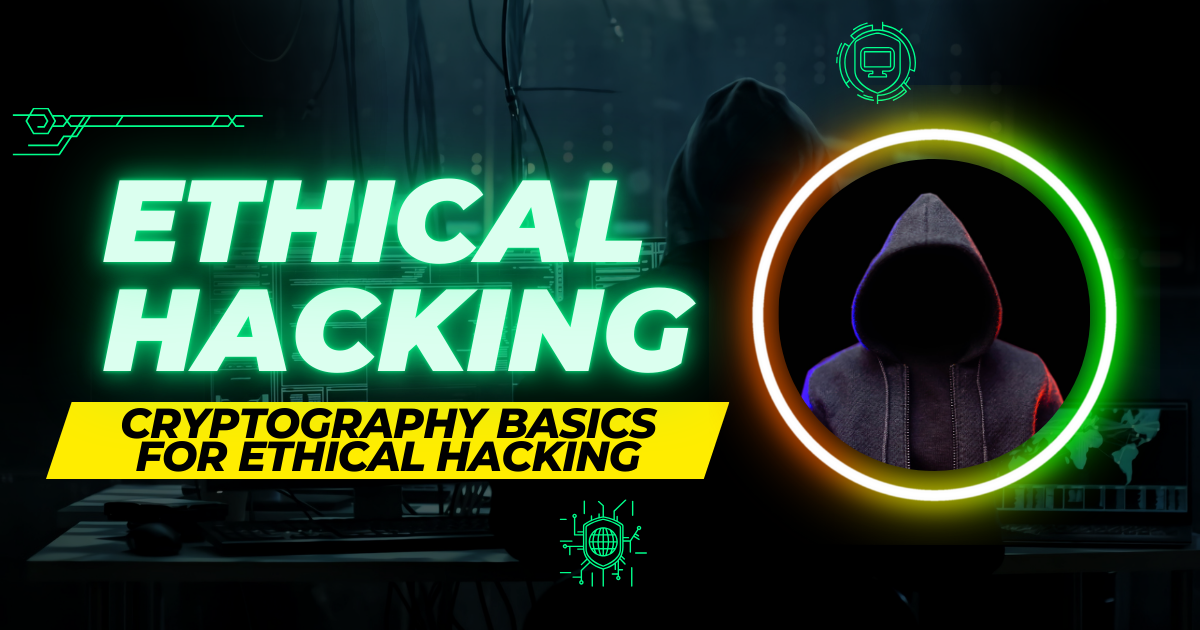Essential Cryptography Basics for Ethical Hacking
 Devyush Raturi
Devyush Raturi
Cryptography, the art of secure communication, is a cornerstone of cybersecurity. For ethical hackers, understanding its fundamental concepts is crucial for both offense and defense. Whether analyzing encrypted traffic, testing cryptographic implementations, or securing sensitive data, a solid grasp of cryptography is indispensable. This article will introduce basic cryptography concepts essential for ethical hackers.
What is Cryptography?
Cryptography is the practice of securing communication by transforming information into an unreadable format, known as ciphertext. Only authorized parties with the correct key can decrypt the ciphertext back into plaintext. In essence, cryptography provides confidentiality, integrity, and authentication.
Key Concepts
Plaintext: The original, readable message.
Ciphertext: The encrypted, unreadable message.
Key: A secret value used to encrypt and decrypt data.
Encryption: The process of converting plaintext into ciphertext.
Decryption: The process of converting ciphertext back into plaintext.
Algorithm: The mathematical function used for encryption and decryption.
Types of Cryptography
Symmetric-Key Cryptography: Uses the same key for both encryption and decryption. Examples include AES (Advanced Encryption Standard) and DES (Data Encryption Standard).
Advantages: Fast and efficient.
Disadvantages: Key management is challenging, as the key must be securely shared between parties.
Asymmetric-Key Cryptography (Public-Key Cryptography): Uses a pair of keys: a public key for encryption and a private key for decryption. Examples include RSA (Rivest-Shamir-Adleman) and ECC (Elliptic Curve Cryptography).
Advantages: Secure key distribution, as the public key can be shared freely.
Disadvantages: Slower than symmetric-key cryptography.
Hashing: A one-way function that creates a fixed-size hash value (digest) from an input. Hashing is used for data integrity and password storage. Examples include SHA-256 and MD5 (though MD5 is now considered insecure).
Advantages: Ensures data integrity, efficient for password storage.
Disadvantages: One-way, meaning the original data cannot be recovered from the hash.
Essential Cryptographic Algorithms
AES (Advanced Encryption Standard): A widely used symmetric-key algorithm known for its security and efficiency.
RSA (Rivest-Shamir-Adleman): A popular asymmetric-key algorithm used for encryption and digital signatures.
SHA-256 (Secure Hash Algorithm 256-bit): A secure hashing algorithm used for data integrity and digital signatures.
HMAC (Hash-based Message Authentication Code): Uses a cryptographic hash function along with a secret cryptographic key. It is used to simultaneously verify both the data integrity and the authentication of a message.
Cryptography and Ethical Hacking
Analyzing Encrypted Traffic: Ethical hackers often need to analyze encrypted traffic to identify potential vulnerabilities. Understanding cryptographic protocols like TLS/SSL is crucial.
Testing Cryptographic Implementations: Ethical hackers test cryptographic implementations to ensure they are secure and resistant to attacks. This includes testing for vulnerabilities like weak key generation, padding oracle attacks, and side-channel attacks.
Password Cracking: Ethical hackers may attempt to crack passwords to assess the strength of password policies. Understanding hashing algorithms and password-cracking techniques is essential.
Digital Forensics: Cryptography plays a role in digital forensics, where ethical hackers may need to analyze encrypted data to recover evidence.
Secure Communication: Ethical hackers must use secure communication channels to protect sensitive information during penetration testing and vulnerability assessments.
Common Cryptographic Attacks
Brute-Force Attack: Trying every possible key until the correct one is found.
Dictionary Attack: Trying common passwords from a dictionary.
Rainbow Table Attack: Using precomputed tables of hash values to crack passwords.
Padding Oracle Attack: Exploiting vulnerabilities in padding schemes to decrypt ciphertext.
Man-in-the-Middle Attack: Intercepting communication between two parties to steal or modify data.
Ethical Considerations
Always obtain explicit permission before attempting to analyze or crack encrypted data.
Use cryptographic tools and techniques responsibly and ethically.
Stay updated on the latest cryptographic advancements and vulnerabilities.
Conclusion
Cryptography is a vital tool for protecting sensitive information. By understanding its fundamental concepts and techniques, ethical hackers can effectively assess security systems, identify vulnerabilities, and contribute to a more secure digital world. Mastering these concepts is a continuous process, as the field of cryptography is constantly evolving.
Subscribe to my newsletter
Read articles from Devyush Raturi directly inside your inbox. Subscribe to the newsletter, and don't miss out.
Written by
